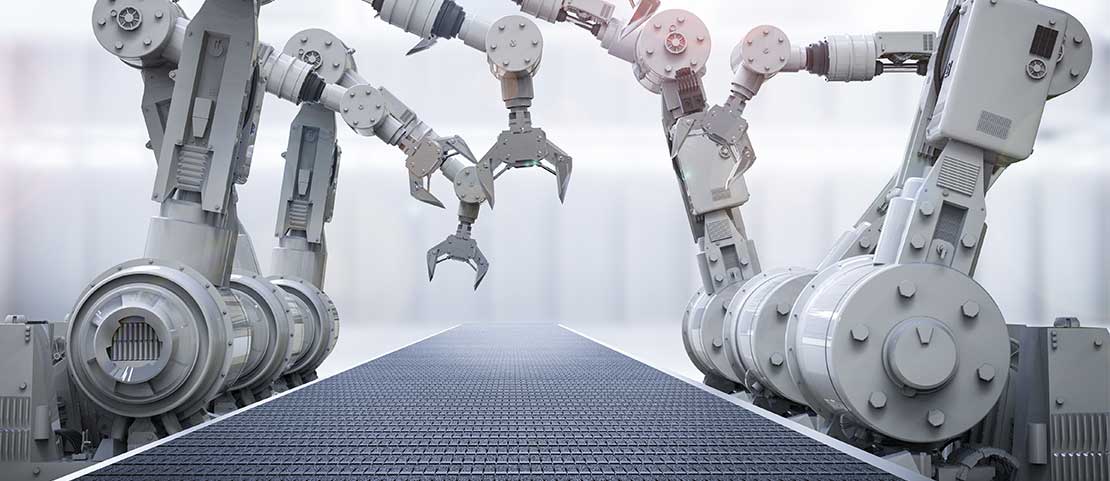

Build Back Better: Will Biden's Recovery Plan Work?
Infrastructure in the US has been crumbling for decades due to a lack of funding, with maintenance backlogs growing state to state.
Like Trump, Biden recognises that good infrastructure is at the heart of a strong economy. He has promised $2 trillion to improve US infrastructure as part of the Build Back Better economic recovery plan. The infrastructure rebuild will include both sustainable upgrades and new developments.
With Build Back Better, Biden envisions major investment into schools, water, municipal transport and telecommunication. He also expects it to create millions of jobs for Americans, including 10 million clean energy-based jobs.
While this is exciting, it requires a significant amount of funding. This is an issue that often hinders the plans of administrations and is something that Biden has yet to address in detail.
What About Funding?
To fix the US’s infrastructure by 2025, the American Society of Engineers estimate that $4.5 trillion will need to be spent.
I expect taxation to play a role in meeting this figure with increased carbon and gas tax. However, critics have noted that these types of taxation could have the biggest impact on middle-low income families and would be met with great resistance.
These taxes haven’t been raised since the early 90’s and there is little enthusiasm in congress to change this - especially with its potentially short longevity, as the world moves towards electric vehicles.
So, other funding avenues must be considered too.
Are Public Private Partnerships the Answer?
It’s argued that Public Private Partnership (P3) projects could help the US government make up these shortfalls in funding, by pairing up public entities with private investors. This means funding would come from a combination of state, regional, federal and private dollars.
To understand the impact P3 projects could have on Biden’s Build Back Better plan, I spoke to former MD of AECOM Captial and current Head of Sales and P3 at Bombardier Transportation, Karl H. Reichelt.
Having won five major US greenfield infrastructure projects valued at +$11 billion, including three of the six largest in American history, Karl is an expert in P3 and understands the value that these projects offer to the US and its infrastructure.
At the local level, P3 is ideal because projects of local significance can get done without imposing 100% of the costs on taxpayers. For the federal government, P3s take the onus off Washington to fully fund all major complex projects from taxes.
The private firms involved with P3 partnerships benefit too, with the length and size of these projects meaning secured business growth for several years.
In terms of the projects themselves, the main advantages of P3 - away from the traditional design-bid-build model - include lower costs, faster delivery time and maximisation on value. Historically, P3 projects have more often been delivered on time and on budget than conventional delivery models.
Despite these countless benefits, Karl believes that P3 projects are being underutilised in the US.
It’s a huge missed opportunity given the billions in dry powder money eager to invest, low interest rates on all forms of debt, the need for economic revival and a lack of adequate public funding needed to tackle the massive infrastructure backlog.
Why There’s Resistance
P3 projects do not come without challenges. The projects themselves are often large and very complex, both technically and legally.
Fixed-price agreements that lock contractors into a set fee and timetable can be an issue. As things change on these jobs, additional costs are often incurred, leading to disputes between owner and contractor about who will pay for them.
Such risks and delays have caused major players in construction like Skanska, SNC Lavalin and Fluor start to retract from entering major P3 projects. This is down to their own negative experiences with the model, with losses in the region of $100 million.
Karl claimed that this is why improved partnership models are needed among public agencies, their advisors, contractors, operators, suppliers, investors and the federal government. A partnership mindset is less adversarial, project-focused and total outcome oriented.
P3 Projects on the Way
While some major companies are still keeping their distance from P3 models, others are growing in confidence in these partnerships and this is significantly benefitting US infrastructure.
Negotiations are almost finalised for a $1.2 billion P3 project for Maryland’s Prince George’s County Board of Education to deliver five new schools and a new K-8 facility over the next four years. The project includes Fengate Capital Management, Gilbane, Stantec and Honeywell.
This is predicted to cut the delivery time by two thirds, while also saving on $180m in deferred construction and maintenance costs.
Other great examples around the US can be found benefitting local authorities and the private sector, providing job boosts, further private investment and paving the way for new technology.
If the US is serious about fixing its infrastructure crisis by 2025, P3 models are going to be critical. They’re essential to making up the deficit of funding in a way that helps both the public and private sector. Build Back Better can work, but P3 partnerships must be embraced and carried out in a safe, cautious manner.
If you'd like to discuss this article with me more or talk about the recruitment service that CM Industrial offer, then please email me at Phillip.Marsh@industrial-cm.com.
For more content like this, visit my consultant page.
Recommended.

Overcoming Automation Roadblocks for Unprecedented Success.
With significant barriers to automation onboarding for warehouses across the industry, how can we navigate these challenges for better success? I spoke with Jeff Christensen to explore the trends and businesses to know right now.

Construction Technology Advancements Leading the Way.
Advancements in the construction technology space are changing the future of the sector. What can we learn from new product offers from company leaders? Click to find out.

Smart Technology & Talent Retention in Access Control: An Interview with Lee Odess.
Smart tech has allowed the security and access control space to evolve greatly in recent years. I spoke with industry leader, Lee Odess, about what the future may hold for the space.
.png)
Your Building Is Under Attack, Are You Prepared?
In the final episode of this series, Lewis speaks with Don and Veronica from 5Q, a key leader in technology, innovation and real estate operations. They discuss key takeaways from this year's Realcomm event and loads more. Click to listen now.
Comments.